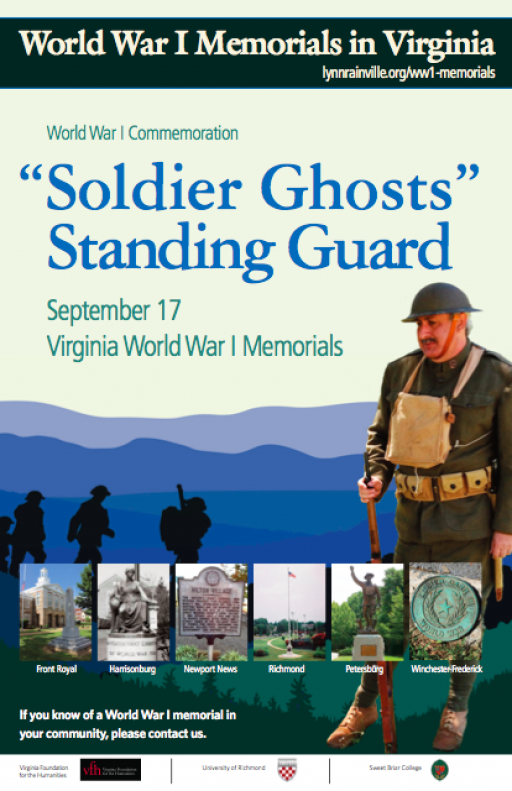Vigils have been held in Virginia in memory of the state’s soldiers who served with US forces during the First World War.
Re-enactors stood guard at five WW1 monuments on 17 September 2016, answering questions from the public and handing out information about veterans from the local community.
The organiser, Dr Lynn Rainville, was inspired by the ‘We are Here’ commemorative event held in the UK as part of the Somme Centenary commemorations.
Across Britain on July 1, volunteers dressed as Great War soldiers captured public attention by making unannounced appearances in towns and cities to bring home the scale of UK losses on the first day of the Battle of the Somme in 1916.
“As a public historian I am always looking for ways to translate the dry dusty pages of history into living culture, and into some meaningful sound byte that helps people quantify past events,” Dr Rainville told Centenary News.
“‘The ghost soldiers’ of the Somme was such a powerful example of this living history, especially the subtle element (silent re-enactors who simply handed out a card about one of the thousands of men who died during the battle)
100,000 Virginians were drafted in the First World War, about 3,700 died, many thousands more were wounded.
Dr Rainville, a research professor at Sweet Briar College, explains that for the past two years, she’s been ‘scouring the state’ for WW1 memorials as part of a joint project with Dr Eric Yellin from the University of Richmond, supported by the Virginia Foundation for the Humanities.
“This past summer I read about the poignant tribute to the soldiers who lost their lives in the Battle of the Somme,” she says.
‘We are Here’ was commissioned as part of 14-18 NOW, the UK’s cultural programme marking the First World War Centenary.
Dr Rainville continued: “As someone who has studied cemeteries for two decades I wanted to translate that idea into an event that called attention to Virginia’s World War I memorials without veering into the macabre.
“I sent around a request to local re-enactor groups and found half a dozen men and women who were willing to come out to a Great War statue or historic marker and stand guard for several hours, answering questions from the public and handing out a flyer about the veterans who served in that community.”
Images courtesy of Dr Lynn Rainville
Posted by: CN Editorial Team
